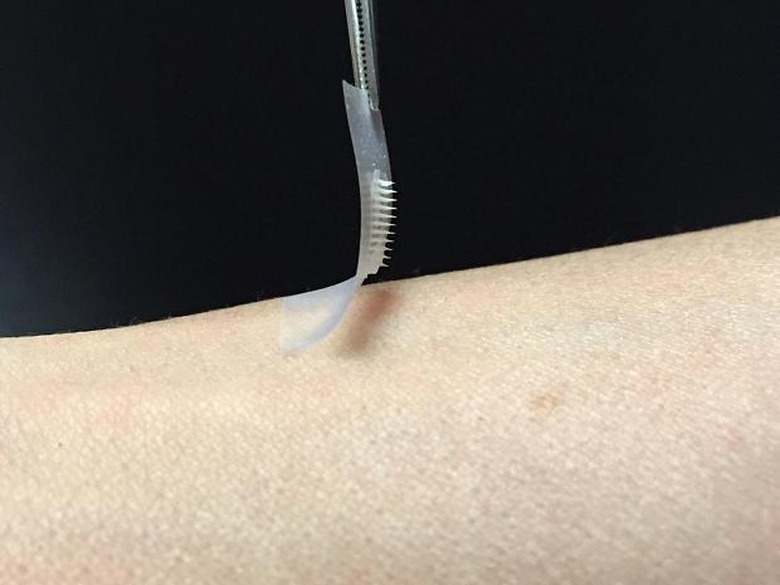A Smarter Way To Treat Diabetes: Insulin Patch Uses 100 Tiny Needles To Measure Sugar Levels
There are millions of diabetes patients around the world who have to inject themselves with insulin on a regular basis, a procedure that's not always comfortable for patients and their families. Many researchers are looking at ways of replacing the invasive method with something that's more user friendly, and it looks like researchers from the University of North Carolina have come up with a smart insulin patch to replace the needle and syringe.
DON'T MISS: KFC Runs DNA Test on Alleged 'Deep Fried Rat' – Guess What They Found
Not only would the smart patch be able to monitor glucose levels, The Telegraph reports, but it would also inject insulin automatically with the help of 100 tiny needles. Even better, the smart patch is about as big as a postage stamp (see above), which would make wearing it hardly a problem. But the best part about it, is that it can deliver precise amounts of insulin, exactly when the body would need them without the patient having to be aware of what's going on.
Thus, in addition to replacing the syringe when it comes to deploying daily doses of insulin, the patch would also do away with a second intrusive diabetes-related chore: Measuring glycemia on a daily basis, which is required in order to adjust the insulin-based treatment.
What happens when the patch is applied is that microneedles (image below) penetrate the skin and start measuring glucose levels in the blood continuously. Each needle carries microscopic storage units for insulin and glucose-sensing enzymes that can rapidly release their cargo when sugar levels gets too high.
When sugar levels reach a certain level, the intelligent nanoparticles sense it with help of the enzymes and disintegrate releasing a certain amount of insulin into the blood stream, depending on how much glucose was detected. Each of the 100 needles carries a certain amount of insulin-laden microscopic balls.
"We have designed a patch for diabetes that works fast, is easy to use, and is made from nontoxic, biocompatible materials," Department of Biomedical Engineering Prof. and co-author Zhen Gu said. "The whole system can be personalized to account for a diabetic's weight and sensitivity to insulin so we could make the smart patch even smarter."
The patch has been tested on mice for the time being, but if successful in clinical trials, it might help diabetes patients completely change the way they monitor their conditions and how they administer insulin. The patch would have to be changed every few days, once its contents is depleted.
